
[ad_1]
Need to know
what is that Grand-Scale Grand Strategy
Expect to pay: £42/$50
Release date: October 25, 2022
Developer: Paradox Development Studio
Publisher: Paradox Interactive
Revised on Radeon RX 6800 XT, Ryzen 9 5900, 32GB RAM
Multiplayer? Yes
Link: Official website (opens in a new tab)
It is 1836 and the machines of the industrial revolution are in high gear. The next century will change the face of the human world with a population explosion, a second industrial revolution, and more. In Victoria 3 (opens in a new tab) you take control of a society trying to ride this wave of explosive change to its end in 1936. What you do along the way, and how much fun you have with it, is up to you.
Victoria 3 tasks you with building a nation by shaping its laws, economy, people and institutions. The developers at Paradox call it a “society builder”. It wants you to care about the details of political movements, distribution of power, popular trends, economic organization, factory production or global trade, and then begin to manipulate them.
That might be difficult for some. Victoria 3 boasts some of the most intricate game mechanics I’ve ever seen in a strategy game. They can be overwhelming. You can micromanage trade routes, chart paths for social reform, adjust your nation’s construction queue, or examine production methods. Even a small nation is constantly given options to play with, and progress in large nations can slow to a crawl as you battle between trade crises and multi-front wars.
Managing this is made easier by one of Paradox’s better user interfaces. It’s not as user-friendly as Crusader Kings 3, but it has significantly more complex systems to work with. The bottom bar in particular is useful, with shortcuts to all sorts of national actions, from building and diplomacy to gathering troops. The map, meanwhile, is eye-catching and impressively detailed, with little trains streaming by, mines scarring the terrain, and tiny soldiers trading gunfire.
I am the law
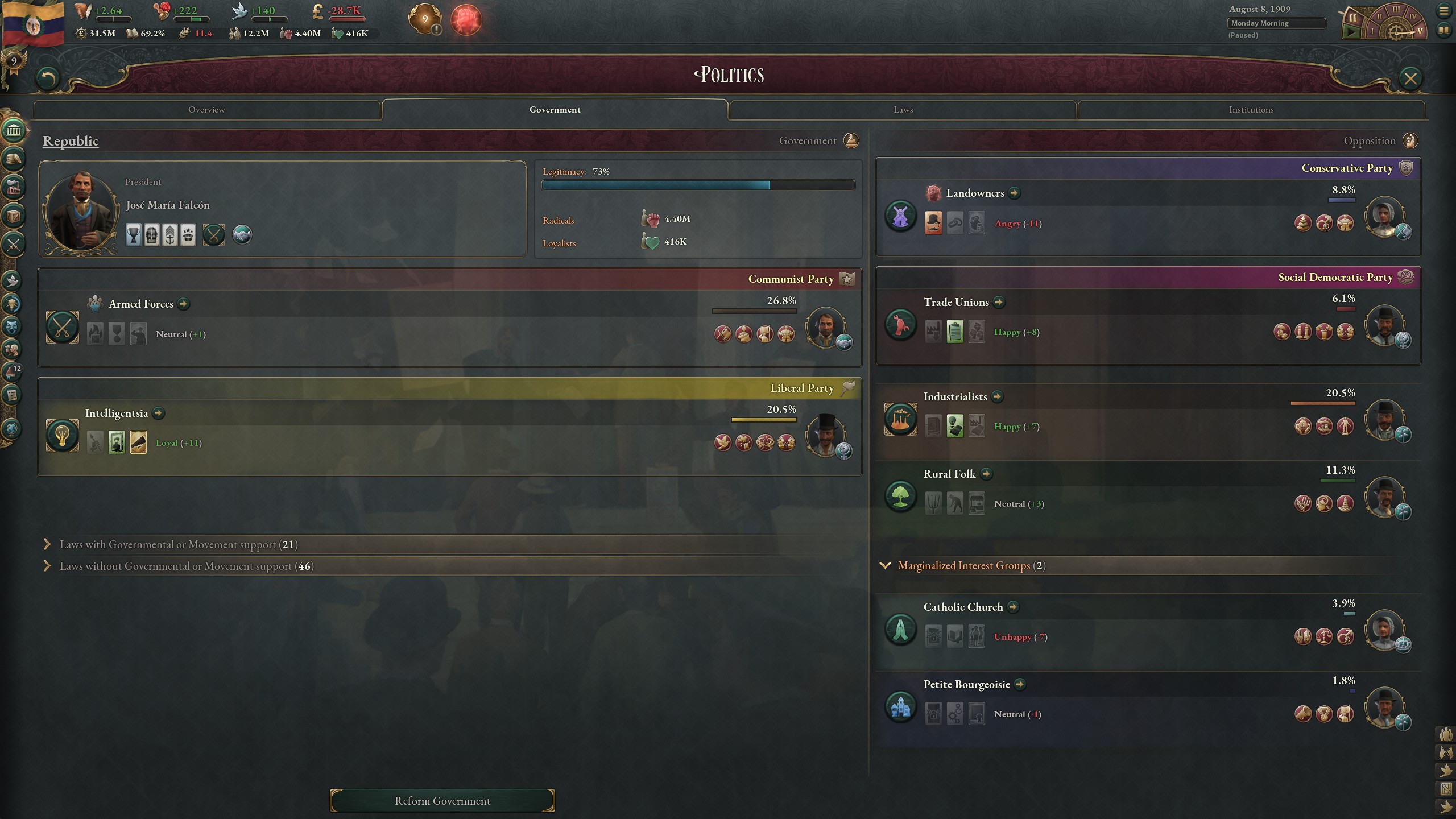
It’s in Victoria 3’s simulation of how society is governed where the game is at its best, pulling you deeper and deeper. Governments are based on laws: sets of options that cover various topics such as how your economy is structured and who gets what. a vote Changing laws requires the support of interest groups, the best mechanic of Victoria 3. These groups such as landowners, petty bourgeoisie, armed forces, trade unions, industrialists, religious authorities and rural people gather power from their members and try to push their agendas, forming dynamic political parties.
These groups intersect masterfully with every other game system, creating opportunities and obstacles. Maybe you want to change tax laws to fix your budget, but the powerful industrialists will cause a big stink, or maybe even join another group and threaten revolution. So you change voting laws to give power to the poor, reducing the political power of the entrepreneur. Of course, that means you now have another group able to push their agenda.
It’s in Victoria 3’s simulation of how society is governed where the game is at its best, drawing you deeper and deeper.
Interest groups also have leaders, and while it’s disappointing that you can’t directly interact with them, they do have nice portraits—and nice interrupt effects. Playing as Grand Colombia, I had a communist become the leader of my powerful armed forces. The normally conservative military bloc changed to form a new Socialist Party with the trade unions and began advocating social reforms. Reforms that would really mark the powerful Conservative Party dominated by the Catholic Church and landowners.
Surprisingly, domestic politics hardly seem to affect international relations. Your World Socialist Vanguard State could be best friends with Her Majesty’s Oppressive Empire with little or no pushback internally or externally. While this might seem like cutting edge realpolitik, in action it just feels like a lackluster system.
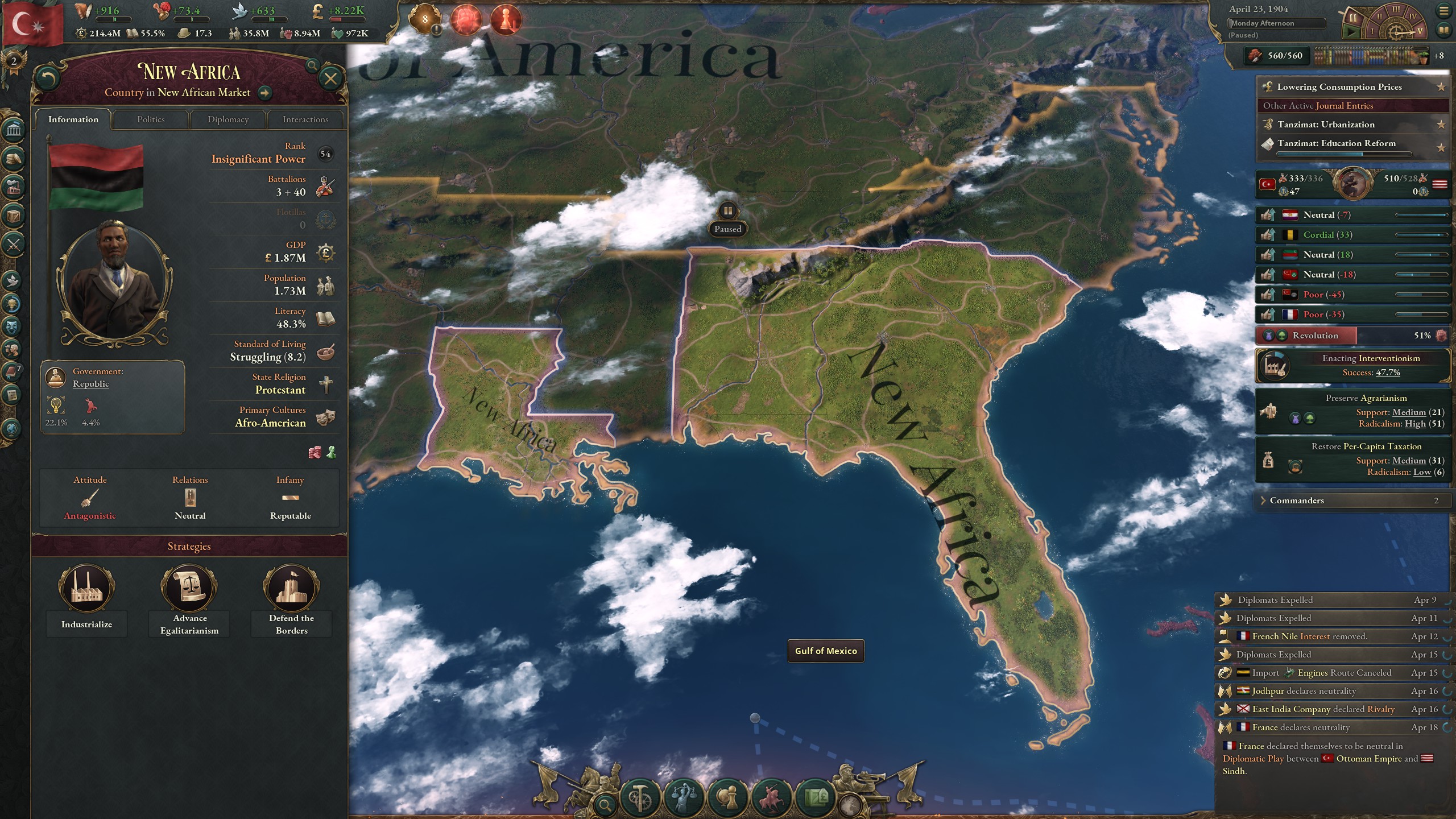
At the core of all these interest groups are people, also known as pops. Every person on the planet is simulated in the background. They have jobs and families, and they want various necessities and luxuries. They migrate and move in a system that is extremely fascinating to watch in action. When ideologies like socialism and fascism are invented pop groups gain new supporters or targets, sparking unrest and revolution both at home and abroad.
Your big concern about peoples is their standard of living, cultural discrimination and employment, but trying to improve these things involves solving big social and political puzzles. Religious freedom and giving immigrants citizenship will anger other people even as it improves lives, so it’s a thorny but compelling balancing act.
Of course, as with many other systems in Victoria 3, it can spit out some strange results. A vast wave of Lacustrian Bantu is migrating to Oregon, popup says. How, I ask, do thousands of people from halfway around the world, originating in undeveloped landless nations, migrate so surely and quickly? Whatever, I guess they need jobs now.
Big business
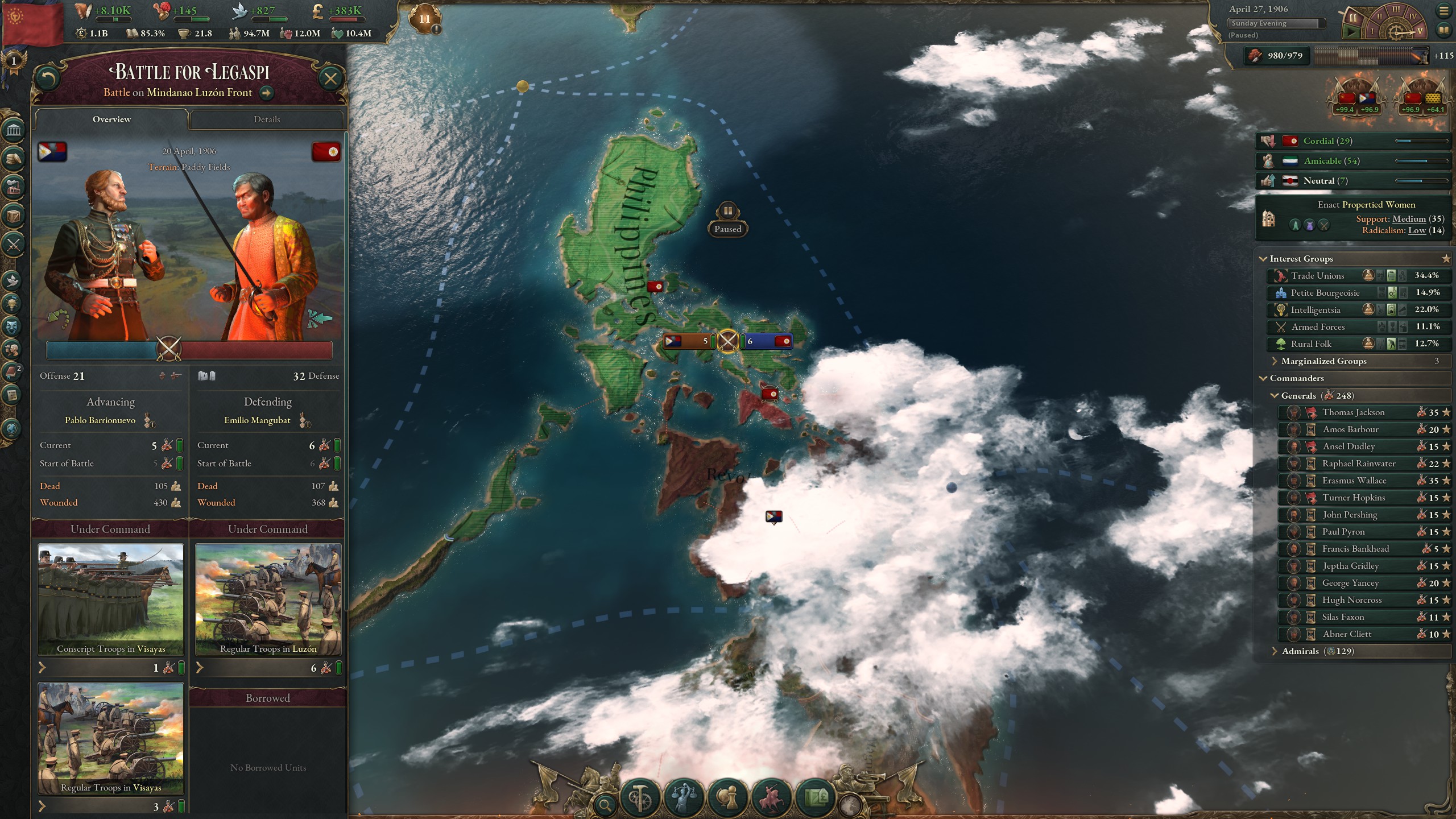
Next to managing the people of a nation, your hand is also on the sector of trade and industry. Victoria 3 has you serving as an omniscient chief executive, deciding what new factories, mines, infrastructure and farms are built. You’ll need money for that, of course, but whether it’s from wealthy investors or the state itself, these are your decisions—the buck always stops with you.
The buck always stops with you.
Victoria 3’s economic system is a slick simulation that encourages real-world behaviors. You don’t always want to accumulate riches. You can run a deficit for a few years, then build up a reserve, or nearly bankrupt yourself fighting world wars before entering years of severe recovery. And if you lack some important goods, you can look abroad and start exploiting less developed nations.
Planning your economy, figuring out what goods are needed to manufacture, what raw inputs to source and from where, is the stuff of which economic strategy dreams. The added complexity of deciding production methods and property interests is just icing on the customizable cake of your nation’s market.
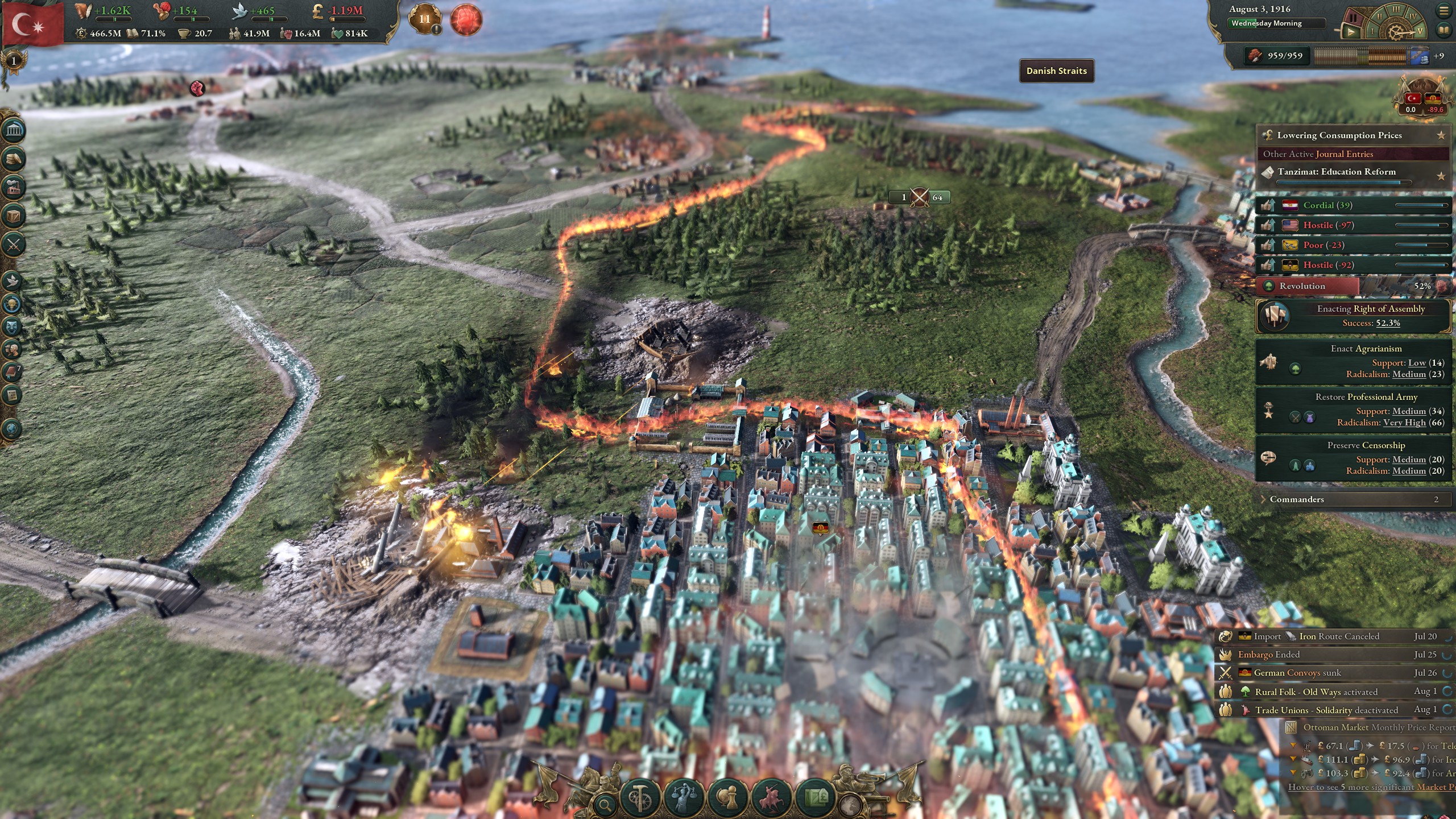
In contrast to difficult tracking of every single bushel of wheat, Victoria 3 provides comprehensibility by saying that while supply of materials is unrealistically infinite it will eventually hit a very, very expensive price ceiling or become so cheap that the market crashes into the floor. Helpfully, a rich trading system lets you quickly address deficits or surpluses from the same screen, and good feedback lets you know when trade lines post a negative balance.
The intermingling of business and state is quickly becoming a colonialist machine that eats people and spits bones. You’ll fight wars of conquest over rubber just so your people can have bicycle tires—or you’ll find your budding socialist utopia playing world police to prevent others from doing the same.
Aggressive negotiations
Then, of course, you will have to deal with conflicts both domestic and international. These conflicts are not always armed, however, and many take place across the negotiating table. This is perhaps the weakest part of Victoria 3, and only a few key systems keep it from being a total failure.
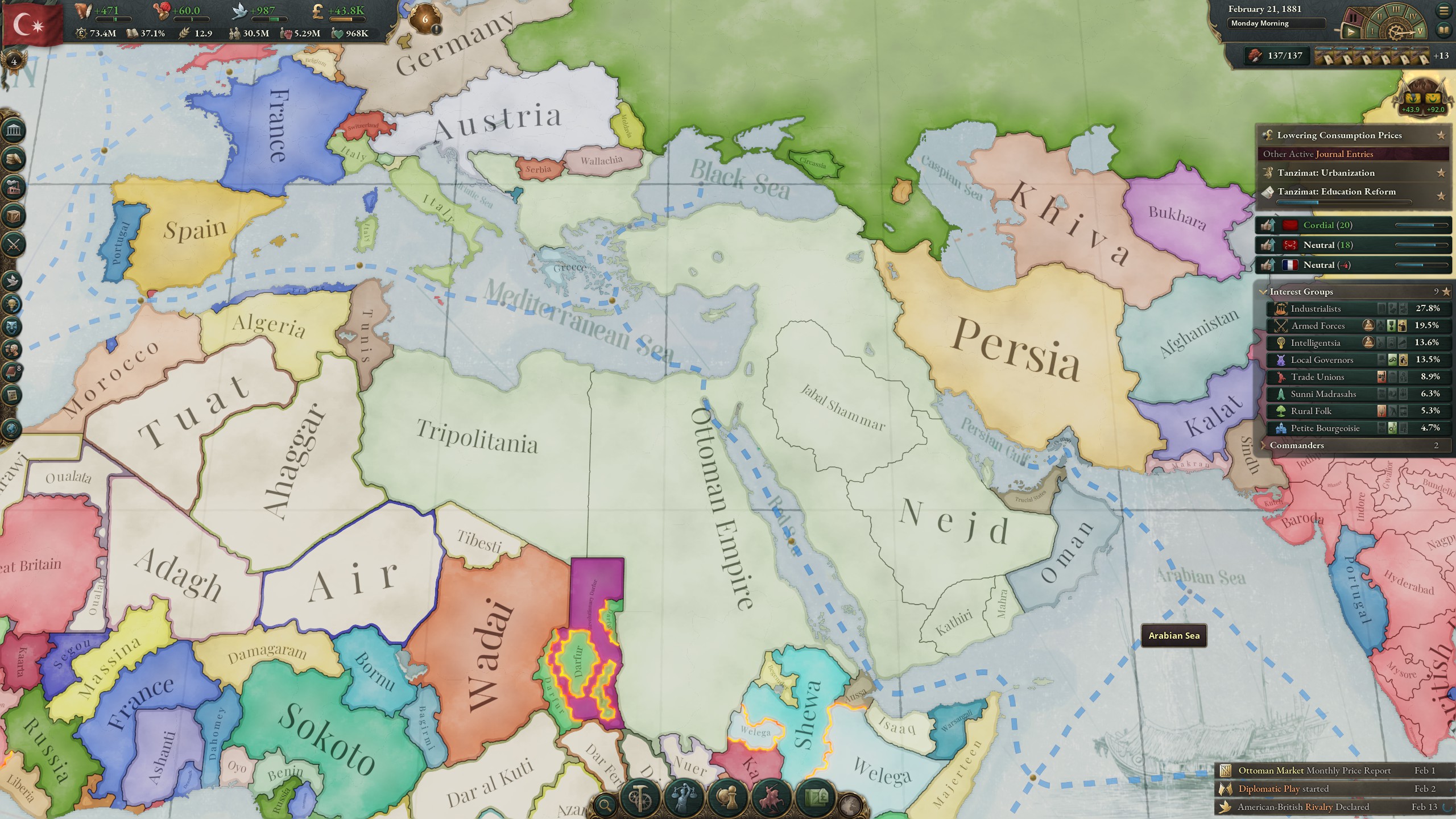
Soldiers are managed abstractly, with your armies directed by generals assigned to fronts. You can tell them to either hold the line or try to move forward and grab territory. It’s actually a pretty good simulation of 19th century warfare—at least from a politician’s seat—because it’s about hoping that the army you built, the equipment you produced, and the person you chose to lead it, can bring you victory. .
When it comes to international relations, the AI is static at best, unpredictable at worst.
Your series of diplomatic options is simple. To do most things, you make a diplomatic play: Claim a state controlled by another country as your own, demand another nation submit as a puppet regime, force others to adopt specific laws. You make demands, the other side makes counter-demands, and outside nations either remain neutral or are bribed to choose a side. You raise and deploy troops to burn your saber. If no one folds before the timer runs out, it means war.
This is a neat system, but the diplomatic actions around it are anemic and hard to pull off for one reason: When it comes to international relations, the AI is static at best, unpredictable at worst. Sometimes it will happily remain friends for decades, or it will become a hateful rival seemingly overnight. It is not clear if this is due to bugs or invisible changes in other countries.
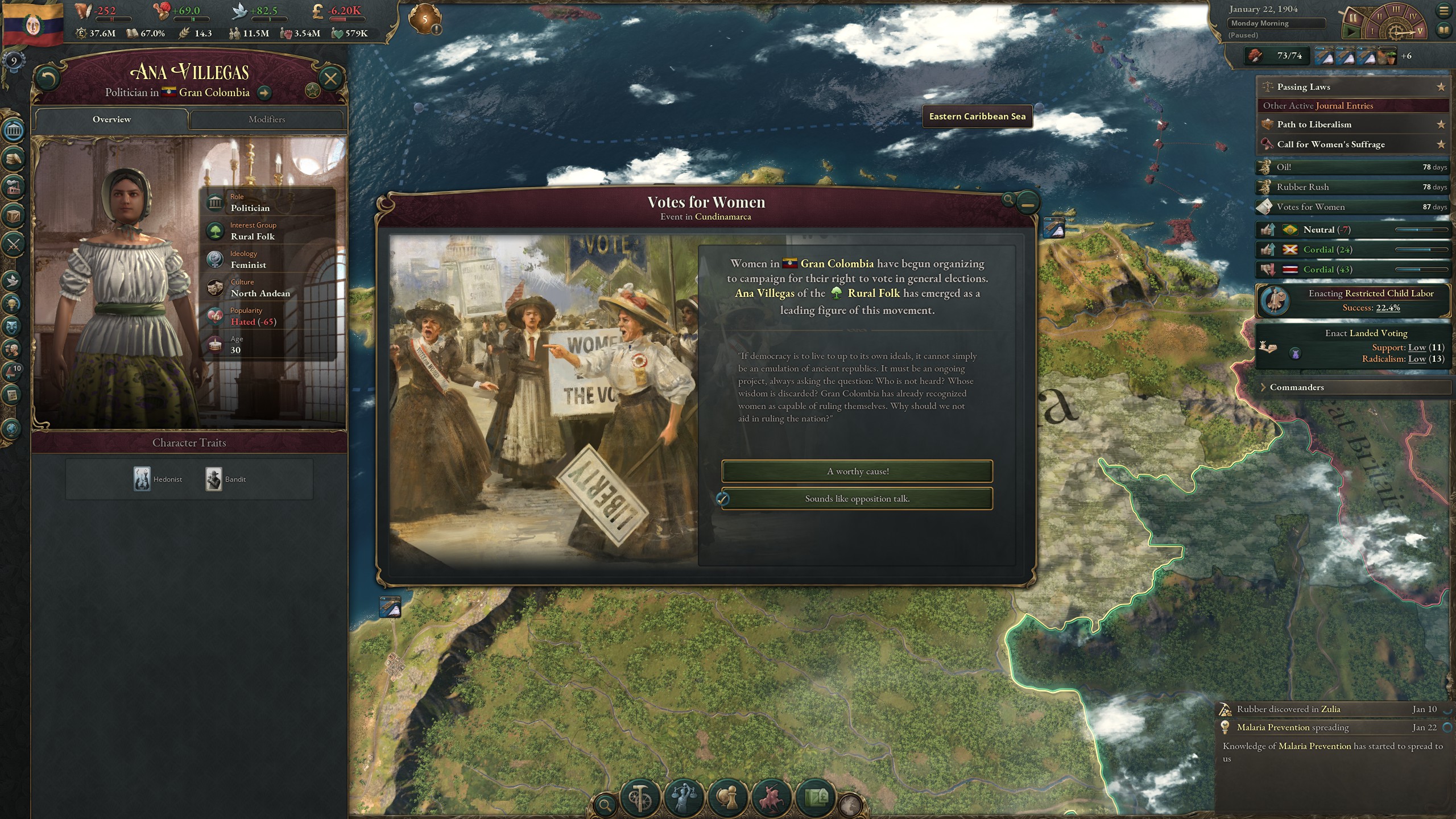
Smaller nations without a sizable army can be locked in civil wars for an endless amount of time, rendering parts of the map unusable unless you want to declare war and end it yourself. Greater ones have the same rich inner life as yours, but lack the guiding hand of a person directing them to greater goals.
This is exacerbated by the short memory of the AI. In a game like the socialist United Trade Unions of America, I helped every communist revolution around the globe to power. More often than not within a month of winning a victory those newly forged sibling nations would decide I was an existential threat and adopt a massive penalty on relations with me.
That, however, is the exception. If anything, the nations of Victoria 3 are too reluctant to forge diplomatic pacts and too reluctant to start wars. I have never seen anything like major conflicts like the Franco-Prussian or Crimean War, let alone an international conflict like World War I.
Victoria 3 is weak on the international stage, but if your fantasy is to take control of a nation and set your own goals, build your own society and play with complex, interlocking systems, it will do it brilliantly. The inner life of your nation is rich, and for much of the game that’s where your focus will be—up to your neck in domestic politics and bickering.
[ad_2]
Source link
